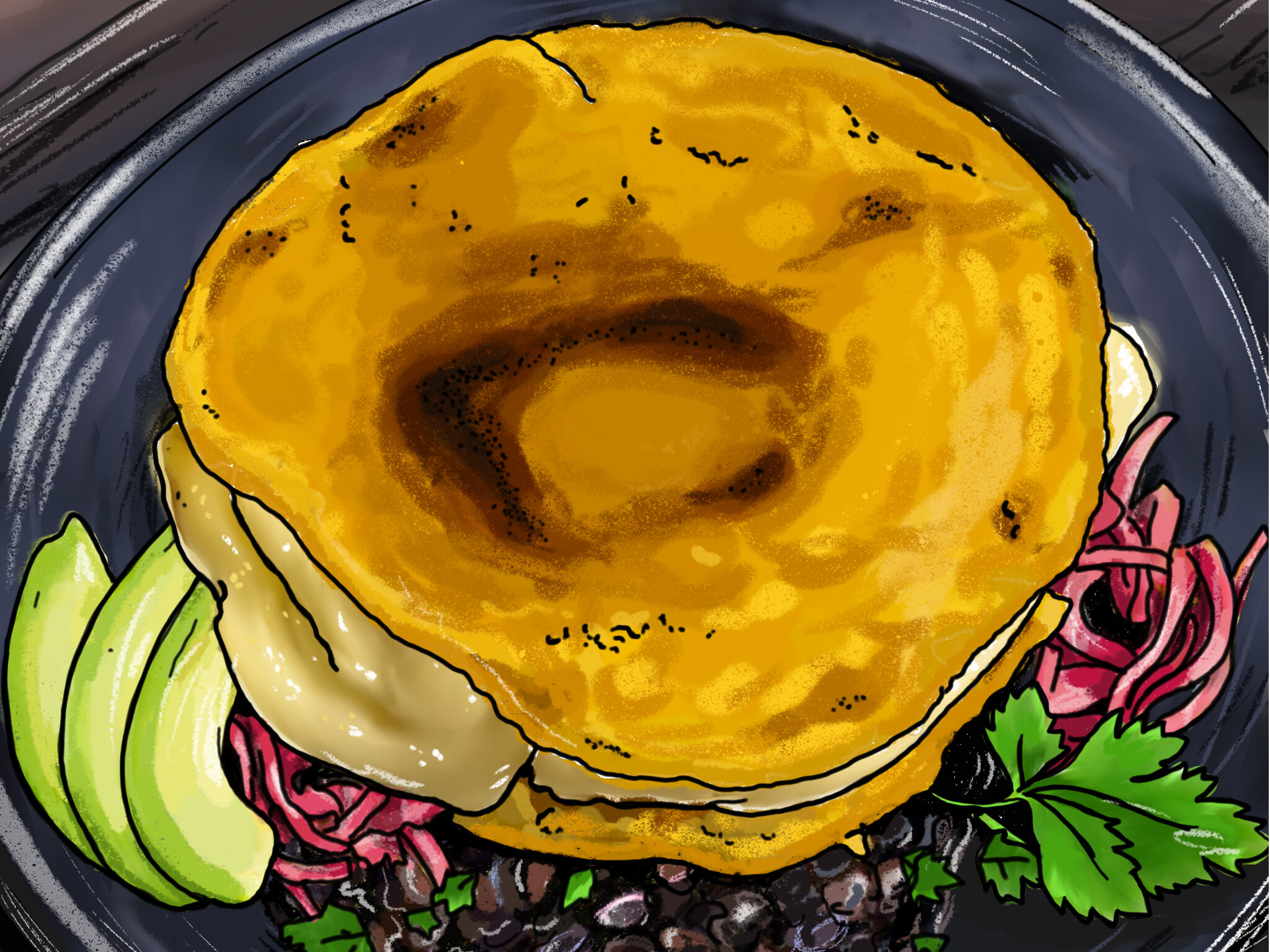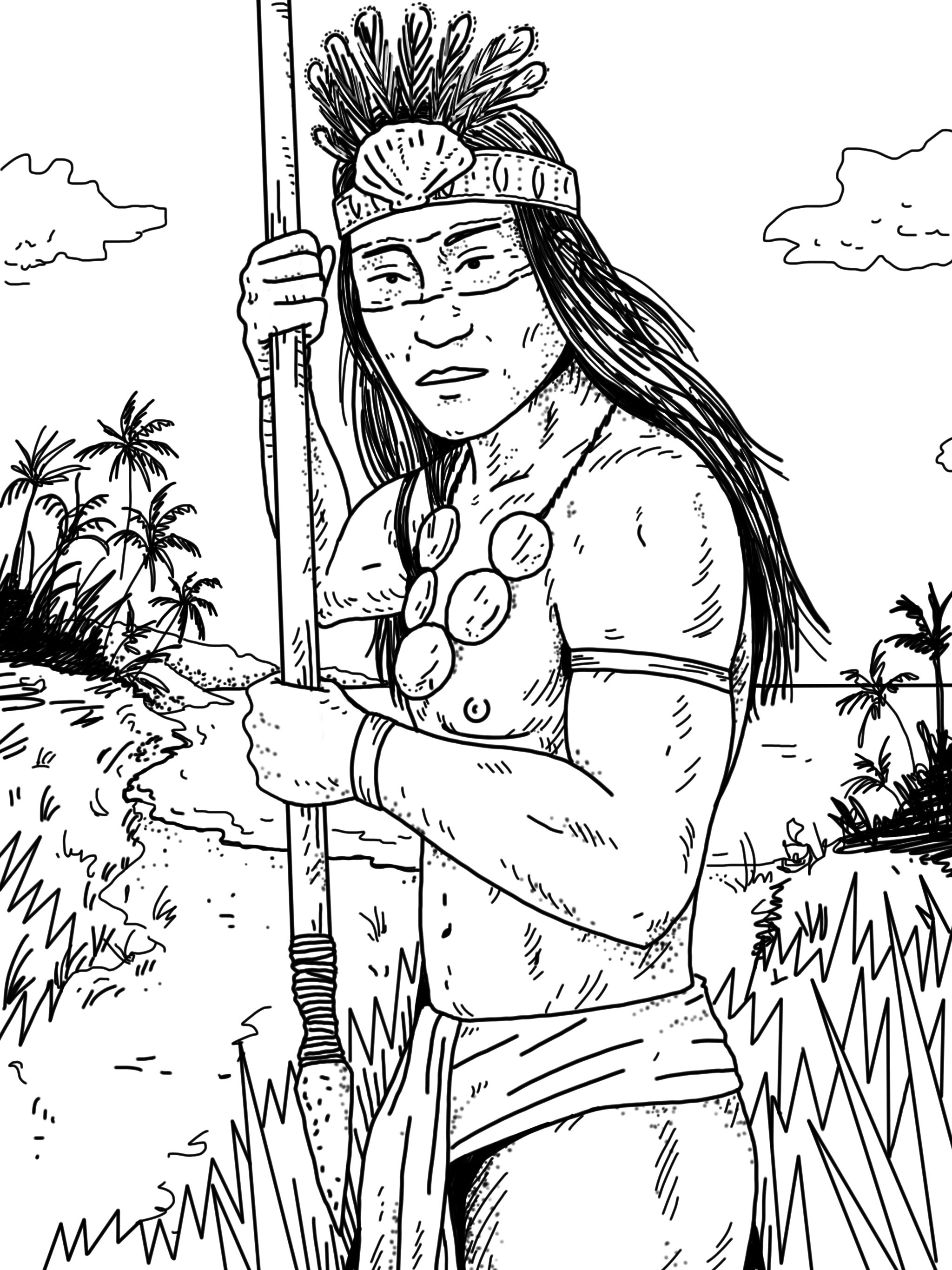Arepas
A region’s staple food often tells a thousand stories, symbolic of its peoples’ origins, resilience and evolution. Across a large part of South America, that staple is the arepa.
Arepas are a semi-flattened bread made of cornmeal. They are served savoury or sweet; baked, grilled or fried; as an accompaniment to or as themselves a meal.
Whilst it’s unclear where the first arepa was made, we can trace its origins back 3,000 years to pre-Columbian South America. The name is thought to have come from the Cumanagoto people - in the area that today is Venezuela – who’s name for corn was erepa and referred to the clay plate it was cooked on as the aripa.
They used a mature, white corn that had been domesticated locally from its Mexican wild-grass parent, and thus specific to the area. The earliest way of processing husks was to chew them, to which this type of corn was particularly user-friendly. This would make them more easily malleable into a dough to then be cooked. So revered were these round breads tribes of the Chibcha people in particular that they adorned guests with necklaces made of a dozen or so little arepas.
European colonisation in 1500s marked a divergence away from ancient methods of production and consumption. The pilón, a large wooden bowl, was introduced in which the corn would be crushed with a pestle-like tool. Ingredients such as cheese and eggs were added to plain arepas.
If the arepa serves as a portal to the region’s past, what of its present? Fast forward to the 20th century: the invention of the dehydrated pre-cooked corn flour and its later industrialization in the 60s has made it in as omni-present as bread on Venezuelan and Columbian tables.
As such, Venezuelans – who’s version is thicker and slightly more dense - use them as an accompaniment to dishes throughout the day or stuff them to make hefty sandwich-style meals. Colombians however more often eat them for breakfast, bought from street vendors who serve the fluffier, more pancake-like version stuffed with cheese, eggs or sugar.
Our version consists of arepas stuffed with melted queso fresco, served alongside black beans, avocado, and pickled red onions.
Makes 8 arepas
Ingredients
1 medium-sized white onion, finely chopped
2 cloves of garlic, minced
1 tsp of chipotle in adobo (or flakes)
1 tsp of ground coriander
½ tsp of ground cumin
1.5 inch cinnamon stick
A pinch of black pepper
1 medium sized ripe tomato, diced
2 tbsps of tomato paste
2 x 400g cans of black beans, drained
1 tbsp of cider vinegar
250g of yellow arepa flour (we use Harina PAN)
200g of queso fresco or mozzarella
Salt
Vegetable oil
To serve
Avocado, thinly sliced
Red onion, thinly sliced & pickled in lime juice
Fresh coriander
Instructions
Start by making the black beans. Place a medium-sized saucepan over a medium-low heat add 3 tbsps of oil for 3 minutes. Add the onion and cook until soft, stirring occasionally so it doesn’t burn. Next add the garlic and cook until fragrant.
Add the chipotle, spices, fresh tomato, tomato paste, pepper, and 1 tsp of salt to the pan, and continue to cook for 3-4 minutes, stirring occasionally. Next, add the beans, vinegar, and 300ml of water, and turn the heat to medium-high. Once the mixture comes to a gentle boil, reduce the heat slightly and simmer for approx. 25-30 minutes until most of the liquid has disappeared, stirring every so often.
In the meantime, prepare the arepas. In a large mixing bowl, combine the arepa flour and 1 tsp of salt. Make a well in the centre and add 325ml of warm water. Mix with a wooden spoon until the water is evenly incorporated. Let the mixture rest for 5 minutes to hydrate. Next, knead the dough a few times and then divide into 8 equal pieces (approx. 70g each). Roll each piece on a flat surface into a ball, and then gently flatten into a flat circle about ½” thick.
Heat 1-2 tbsps of oil in a skillet or non-stick frying pan over a medium heat for a few minutes until hot. Add the arepas to the pan in batches, and cook for 4-6 mins on each side, until crisp on the outside and fluffy in the middle - make sure you check whether you need to replenish the oil each time you start cooking a new batch. Remove the cooked arepas from the heat and place on a paper towel-lined plate.
Once cooled enough to handle, use a sharp knife to cut the arepas open around the edges like a pita pocket, leaving approx. two inches still attached. Fill with a few thinly sliced pieces of cheese and fold back together.
In batches, place the cheese stuffed arepas back in the pan on a low heat until the cheese melts.
By now your beans should be ready. Crush some of the beans with the back of a wooden spoon to help bring the sauce together to a creamy consistency. Check the seasoning and remove the cinnamon stick before serving.
Serve the arepas and black beans alongside thinly sliced avocado, pickled red onions and fresh coriander.
Words Ary Anbari / Recipe Poppy Mist / Illustrations © Diogo Rodrigues





